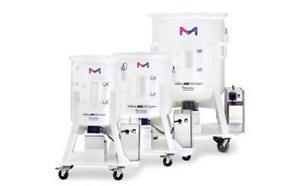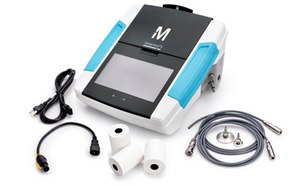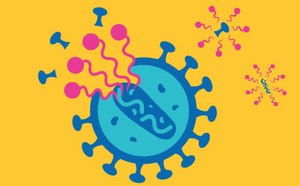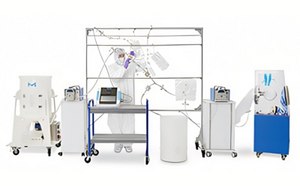Blood Plasma Fractionation
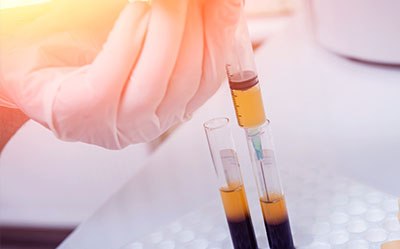
Plasma fractionators play a critical role in the treatment of rare life-threatening conditions. Consistent, reliable performance is key to plasma fractionation, posing challenges that must be met in order to better serve patients around the globe: improving yield, maintaining process economics, and managing ever-increasing regulatory requirements. Choosing the right partner with deep understanding of these challenges is vital, offering fractionators a gateway to new solutions and resources that can enhance their full range of blood plasma products.
Featured Categories
Explore Mobius® single-use mixing solutions for pharmaceutical ingredient blending and process solution preparation.
Efficient Filter Integrity Testing: Elevate quality control with Integritest® 5, offering bubble point, diffusion, and hydrophobic testing in-line or offline.
Enhance biopharma safety and compliance with our viral inactivation solutions, including sustainable detergents, low pH treatment, and viral clearance testing services.
Enhance final filtration and sterile fill processes with pre-sterilized, single-use systems for optimized operations.
Immunoglobulin
Polyclonal immunoglobulin G (IgG) is the primary high-value product for all plasma manufacturers. Today, immunoglobulin is administered in higher concentration dosages; this requires formulations which are well-tolerated by the patient. Key parameters for tolerability include:
- High purity
- Low immunoglobulin A and M (igA, IgM) content
- Low prekallikrein activator (PKA) content
- Low anticardiolipin antibody (ACA) content
- Low isoagglutinin content
The clinical efficacy of IgG is determined by the process and the quality of manufacture. Key features include an intact molecule, physiological sub-class distribution, pH of administration, absence of pyrogens, and low toxic residue content. IgG is currently used to treat primary immunodeficiency (PID), neurological conditions, hematology, and other infectious diseases.
Albumin
Albumin, often referred to as HSA (human serum albumen), is a stable protein with a molecular weight of 67 kD. It is sometimes added as a stabilizer for other plasma products, though its therapeutic use is as a fluid replacement treatment to expand blood volume in patients typically traumatized by burns or surgery. Albumin is manufactured in large quantities and is produced by all plasma manufacturers. Frequently, three to five batches per week may be manufactured in both low and high concentrations.
While raw plasma contains around 35–50 g of albumin per liter, 25–40% of that volume is lost during the actual fractionation process. This can lead fractionators to consider a chromatography method instead of Cohn fractionation, as chromatography has more favorable loss percentages of around 15–20%.
Factor VIII
Improving purity while maintaining specific activity is important in production of Factor VIII (FVIII), an essential blood-clotting protein. Clinical requirements of administration to a patient include low immunogenicity and high purity, which translates to low isoagglutinins and accompanying protein count, no foreign proteins or DNA, and low amounts of chemical residues. The purification process is designed to achieve these requirements:
- Increasing process efficiency and product recovery
- Achieving higher product yield
- Ensuring process safety and reproducibility of multi-strain products
Visit our document search for data sheets, certificates and technical documentation.
Related Technical Articles
- Minimize bottlenecks in downstream processing. Discover how flow-through technologies increase speed and efficiency, reducing footprint and costs.
- Understand how considerations such as DMSO concentrations and freezing techniques are key in the successful implementation of high cell density cryopreservation (HCDC).
- High cell density cryopreservation (HCDC) is a closed processing alternative to the traditional seed train expansion process. Learn more about the benefits of HCDC.
- Antibody Drug Conjugate Manufacturing
- See the data on how the chito-oligosaccharide ChetoSensar™ overcomes ADC solubility challenges.
- See All (48)
Find More Articles and Protocols
Related Product Resources
- Application Note: Integration of Bioburden Reduction and Sterile Filtration in Human Plasma IgG Purification
This application note presents an intensified IgG purification process of human plasma from optimized sterile filtration steps.
- Brochure: Leveraging the Advantages of Single-use in Plasma Processing
Strategically leveraging single-use technologies in key areas of the process provides significant advantages.
- Brochure: Plasma Processing Capabilities
This brochure outlines the plasma processing capabilities and biomanufacturing products and services.
- White Paper: Intensification of Human Plasma IgG Purification for Intravenous and Subcutaneous Administration
In this white paper, we present the results from our collaboration with Taipei Medical University to develop and evaluate the reliability and consistency of various new steps to purify plasma-derived IgG.
- Detergents REACH Information
Explore our comprehensive portfolio of detergents and surfactants as possible Triton X-100 alternatives for your research applications before the REACH Annex 14 ban takes effect.
- Brochure: Process Development and Drug Manufacturing
Our services guide you at every stage of your equipment and software life cycle.
How Can We Help
In case of any questions, please submit a customer support request
or talk to our customer service team:
Email custserv@sial.com
or call +1 (800) 244-1173
Additional Support
- Chromatogram Search
Use the Chromatogram Search to identify unknown compounds in your sample.
- Calculators & Apps
Web Toolbox - science research tools and resources for analytical chemistry, life science, chemical synthesis and materials science.
- Customer Support Request
Customer support including help with orders, products, accounts, and website technical issues.
- FAQ
Explore our Frequently Asked Questions for answers to commonly asked questions about our products and services.
To continue reading please sign in or create an account.
Don't Have An Account?